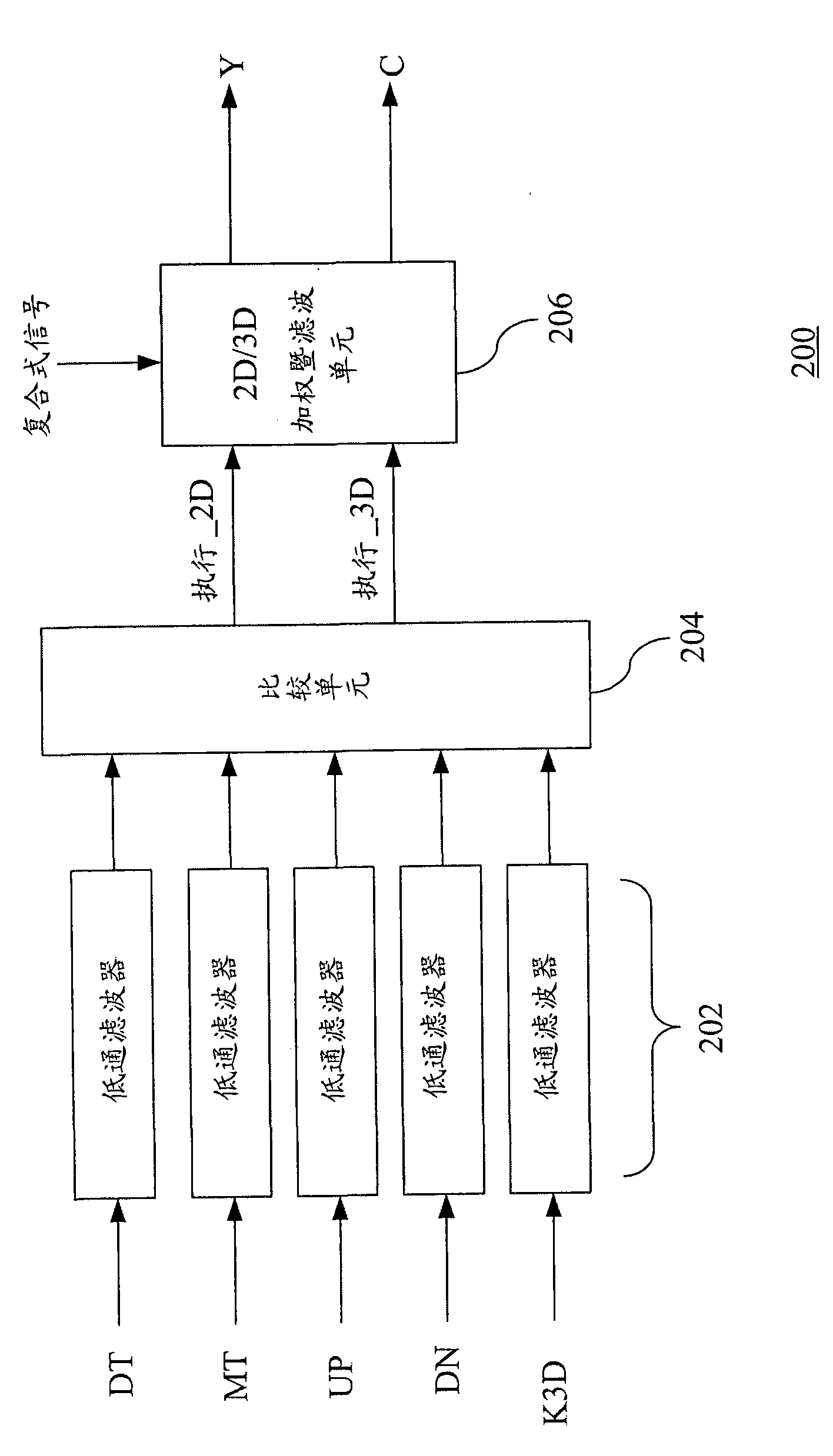Method for separating brightness and chrominance in composite analog television signal
An analog TV, composite technology, applied in the direction of luminance and chrominance signal processing circuits, etc., can solve problems such as inability to separate composite signals
- Summary
- Abstract
- Description
- Claims
- Application Information
AI Technical Summary
Problems solved by technology
Method used
Image
Examples
Embodiment Construction
[0019] For a composite analog TV signal, it includes a luminance (Y) signal and a chrominance (C) signal, and has several continuous images encoded therein. Figure 1A It is a schematic diagram illustrating a processed pixel and its adjacent pixels in a current image according to an embodiment of the present invention. Such as Figure 1A As shown, the current image includes a processing pixel (such as: YC) and its horizontally adjacent and vertically adjacent pixels (such as: YC1, YC2, YC3 and YC4), wherein the processing pixel YC and its horizontally adjacent pixels YC1 and YC2 There are difference values (such as: gray scale difference) MT and DT between them, and there are difference values (such as: gray scale difference) UP and DN between the processing pixel YC and its vertically adjacent pixels YC3 and YC4 respectively.
[0020] Figure 1B is a schematic diagram illustrating a continuous image with the current image and its previous image according to an embodiment ...
PUM
 Login to View More
Login to View More Abstract
Description
Claims
Application Information
 Login to View More
Login to View More - R&D Engineer
- R&D Manager
- IP Professional
- Industry Leading Data Capabilities
- Powerful AI technology
- Patent DNA Extraction
Browse by: Latest US Patents, China's latest patents, Technical Efficacy Thesaurus, Application Domain, Technology Topic, Popular Technical Reports.
© 2024 PatSnap. All rights reserved.Legal|Privacy policy|Modern Slavery Act Transparency Statement|Sitemap|About US| Contact US: help@patsnap.com










